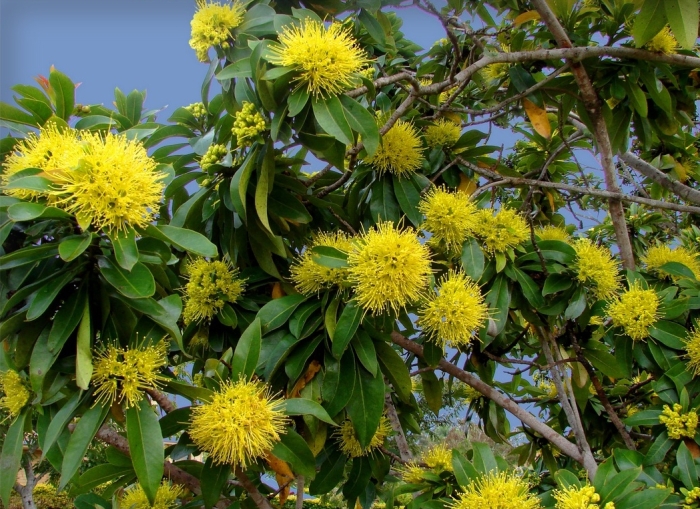Golden Penda
(Xanthostemon chrysanthus)
Golden Penda (Xanthostemon chrysanthus)
/
/

Tatters:)
CC BY 2.0
Image By:
Tatters:)
Recorded By:
Copyright:
CC BY 2.0
Copyright Notice:
Photo by: Tatters:) | License Type: CC BY 2.0 | License URL: https://creativecommons.org/licenses/by/2.0 | Uploader: Macropneuma | Publisher: Wikimedia Commons | Title: Xanthostemon_chrysanthus1.jpg | Notes: {{Information |Description=Photographed between Bolgart and Goomalling Western Australia ''Xylomelum angustifolium'' -- Sandplain Woody Pear |Source=Digit Photograph -- Own Work |Date=August 28, 2008 |Author=Gnangarra |Permission=Gnangarra custom license |












Estimated Native Range
Summary
Xanthostemon chrysanthus, commonly known as Golden Penda, is an evergreen tree native to the coastal rainforests and riverine areas of Queensland, Australia. It can reach heights of 10–15 meters (33–49 ft) with a width of 5–8 meters (16–26 ft) in its natural habitat, but it is often more compact when cultivated in gardens. The tree has a bushy habit with rough bark and is renowned for its showy, bright yellow flowers that bloom sporadically throughout the year, with a peak in summer. The flowers are arranged in dense, terminal clusters, adding to the plant’s ornamental value.
Golden Penda is highly valued for its vibrant floral displays and is used in gardens and parks for its aesthetic appeal. It is also suitable for urban planting due to its tolerance of pruning, which allows it to be maintained in a smaller, more manageable size. This species is relatively easy to maintain, requiring only medium amounts of water and well-drained soils. It thrives in full sun but can tolerate part shade. While it can be propagated by seed, cuttings are often preferred for maintaining cultivar characteristics. Golden Penda may be susceptible to root rot in poorly drained soils and can attract pests such as scale insects and sooty mold.CC BY-SA 4.0
Golden Penda is highly valued for its vibrant floral displays and is used in gardens and parks for its aesthetic appeal. It is also suitable for urban planting due to its tolerance of pruning, which allows it to be maintained in a smaller, more manageable size. This species is relatively easy to maintain, requiring only medium amounts of water and well-drained soils. It thrives in full sun but can tolerate part shade. While it can be propagated by seed, cuttings are often preferred for maintaining cultivar characteristics. Golden Penda may be susceptible to root rot in poorly drained soils and can attract pests such as scale insects and sooty mold.CC BY-SA 4.0
Plant Description
- Plant Type: Tree
- Height: 20-45 feet
- Width: 15-35 feet
- Growth Rate: Moderate
- Flower Color: Yellow
- Flowering Season: Winter, Spring
- Leaf Retention: Evergreen
Growth Requirements
- Sun: Full Sun
- Water: Medium
- Drainage: Medium
Common Uses
Bee Garden, Bird Garden, Butterfly Garden, Low Maintenance, Showy Flowers, Street Planting
Natural Habitat
Coastal rainforests and riverine areas of Queensland, Australia
Other Names
Common Names: Black Penda, Golden Myrtle, First Love, Johnstone River Penda
Scientific Names: , Xanthostemon chrysanthus, Metrosideros chrysantha, Nania chrysantha,
GBIF Accepted Name: Xanthostemon chrysanthus (F.Muell.) Benth.